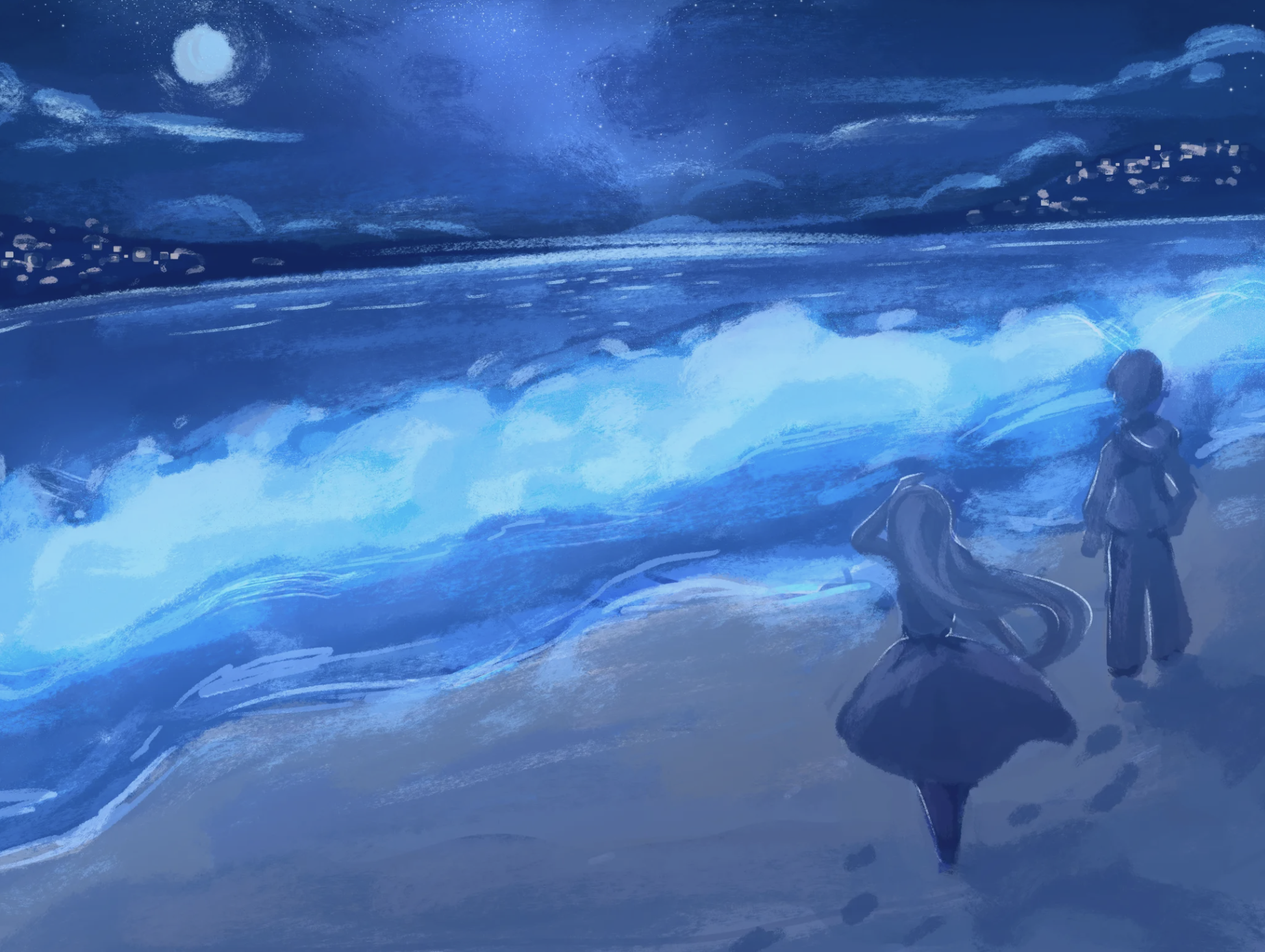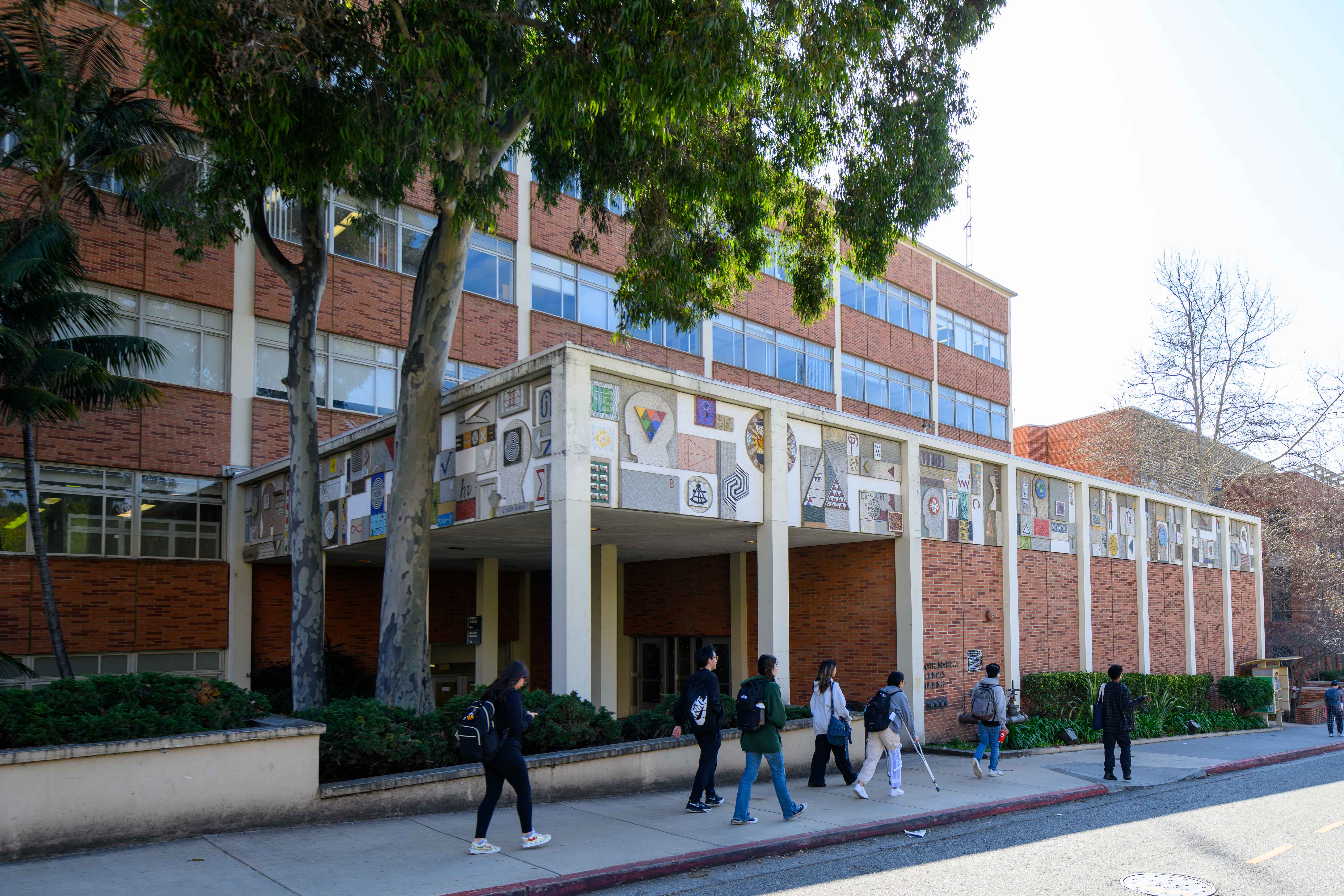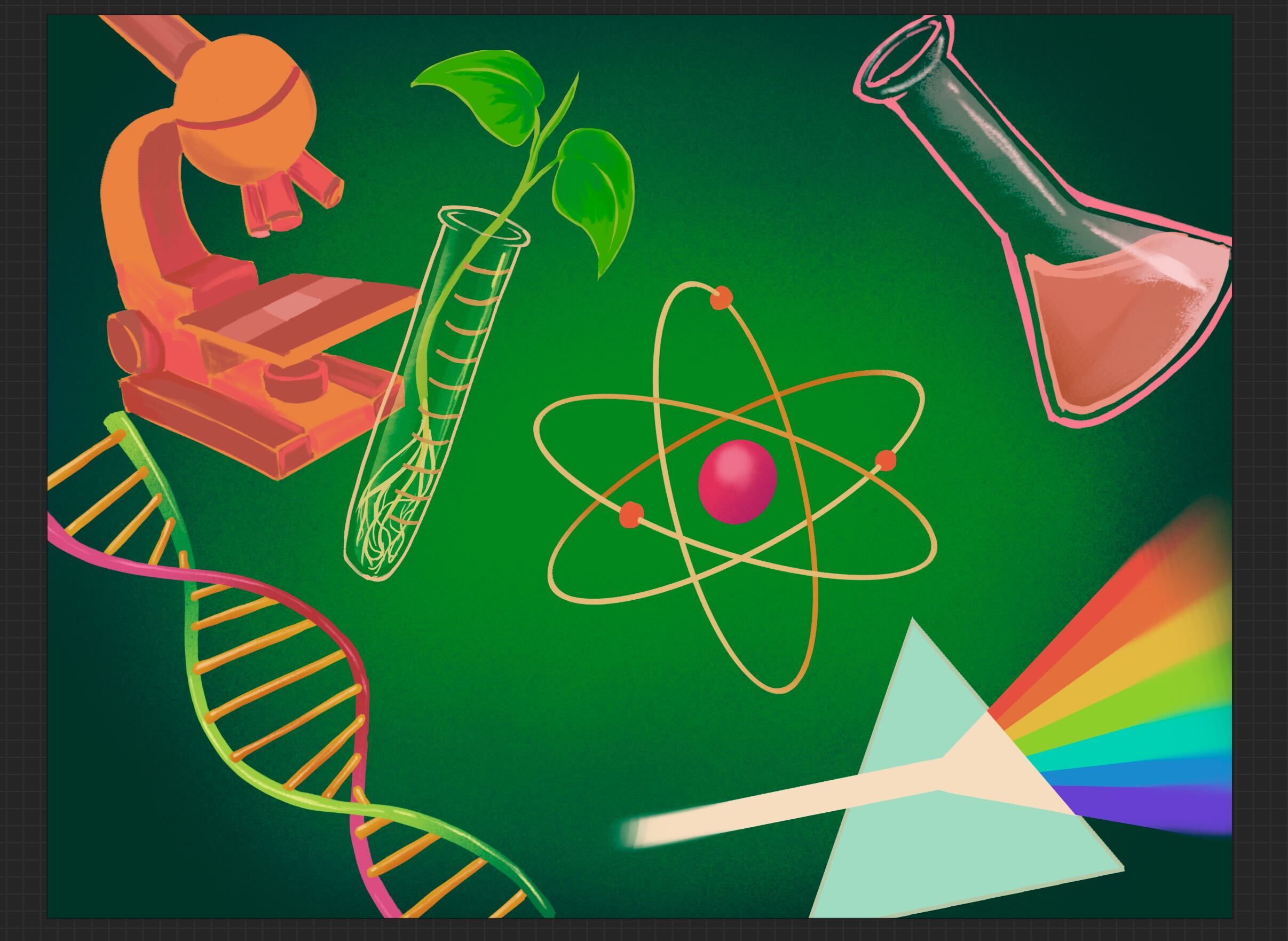UCLA professor, students discuss science behind bioluminescent waves

(Valerie Liman/Daily Bruin)
By Eghosa Otokiti
Jan. 7, 2025 6:06 p.m.
In late October and early November, many of Southern California’s beaches had bright blue waves.
The glow was caused by large amounts of phytoplankton, a type of small photosynthetic organism at the bottom of the ocean food chain, said Rebecca Shipe, an adjunct associate professor in the Institute of the Environment and Sustainability. While phenomena like this usually disappear quickly, these glowing waves last exceptionally long, making for a fun attraction for students and an interesting case study for scientists.
First hearing about bioluminescent waves in eighth grade, Sydney Chen, a first-year philosophy student, said she was interested when she heard from a friend about the waves hitting California in the fall. Chen finally saw the phenomena up close late in the evening Nov. 10, she added.
“It was really cool,” she said. “I didn’t think that it would be so bright, but it was.”
Shrika Andhe, a first-year engineering student, said she learned about the waves from a friend’s Instagram story. She added that she had not seen bioluminescent waves before, so she made the trip to Marina Del Rey the morning of Oct. 25.
“The water was lighting up. It was electric,” Andhe said. “It was sparks of blue in each wave.”
Shipe said this glow was caused by a harmful algal bloom or HAB. Shipe added that she has been researching these types of events with her team since 2008.
“Once a week, we go down to the coastline and get water samples to see what kind of phytoplankton are in the water, specifically harmful phytoplankton,” she said. “This red tide was one of those potentially harmful algal blooms.”
Red tide is an informal shorthand to describe the ocean turning red due to large amounts of red phytoplankton, Shipe said, adding that only some HABs are red tides.
Shipe added that the specific organism that was glowing in Southern California is called Lingulodinium polyedra and that its bioluminescence is caused by a chemical reaction triggered by a mechanical disturbance or pressure applied to the organism.
“That’s why whenever the phytoplankton is floating in the water and it’s near the surface and waves crash, the pressure of the wave crashing will cause the stimulus and the chemical reaction within the cell,” Shipe said.
She added that to reach such a large population count, phytoplankton need sunlight and nutrients. Naturally, she said, phytoplankton can get these nutrients by upwelling, where wind blows surface water away and cold nutrient-rich water rises to the surface.
Shipe also said bioluminescent waves are not intrinsically indicative of water quality or marine health. From the point of view of marine life, it can be negative because decaying algae can release toxins and lead to ocean deoxygenation, posing natural threats to those creatures, she added.
However, Shipe said just touching the algae would not be majorly harmful, even though they are toxic. The harm comes from bioaccumulation, which means that each successive creature up the food chain that consumed the phytoplankton gains some toxin in their system, she added.
“By the time it gets to a larger fish or bird or a mammal, it can have toxic effects on that bird or mammal or that human,” Shipe said.
Benjamin Knowles, an adjunct assistant professor in the Institute of Environment and Sustainability, said the sheer amount of algae needed for red tides to be visible can harm sea life even without toxins.
“All the biomass is consuming oxygen,” they said. “They’re always using oxygen. They always have the same respiration we have, but in the daylight hours, they also have photosynthesis.”
But at night, Knowles said, the photosynthesis stops and the algae are only consuming oxygen. Knowles, who with their team studies how viruses kill organisms like algae, said this algal bloom raises important questions.
“A bloom is a banquet. It’s a feast for these predators,” they said. “Why did it take them two months to kill it off?”
Knowles said many specific questions about the latest bloom are hard to answer because of the location of where HABs occur at times and the quickness of how HABs usually dissipate.
Shipe added that while it is possible that red tide events are growing more frequent, it’s hard to definitively say how climate change can affect HABs because there are not many long-term studies and sampling locations.
Shipe said everyone at UCLA should go see bioluminescent waves if they come around again.
“It’s a natural phenomenon that’s just absolutely stunning and makes you excited about nature and the environment and curious about the environment,” she said.




